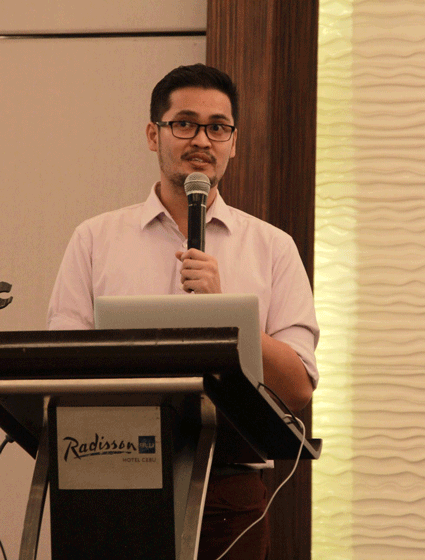Architecture and urban planning are typically seen as distinct fields, although they share an emphasis on physical design. Some architects perpetuate this by ignoring broader environments and policies in their designs to instead focus exclusively on physical planning. Neil Menjares is working on the blueprints to change that.
After studying and teaching architecture in the Philippines, Menjares joined Iowa’s Urban and Regional Planning (now called the School of Planning and Public Affairs) master’s program as a Fulbright scholar. He took an increased interest in policy and development as he studied the role of social science concepts in design. The program offered a comprehensive scope to planning beyond the traditional physical design component.
“My view of urban planning has broadened so much since I attended Iowa’s program,” says Menjares. “Urban planning and architecture has been considered more of a physical planning – in that its output is still design – but I now see it as more of a social science than just physical planning, and I’m now more interested in socioeconomic policy.”

Menjares focused more on public policy within the program and decided to pursue a concentration in economic development. Sociological aspects of planning like these became apparent when he began working on his capstone project. Menjares and a team of peers developed a comprehensive model plan for the city of Salix, Iowa.
The Salix comprehensive plan allowed Menjares to experience the many different aspects of planning in action. He gained experience collecting data, holding public forums, presenting the proposed plan, and everything in between. He and his peers also recognized several key issues facing the city, including the limited planning resources available to the local government.
“We identified projects for the city and provided a recommended timeline for implementing them, along with describing funding sources for them,” says Menjares. “Comprehensive plans don’t usually include that, but we felt that we needed to do that for the city because they didn’t have the staff to do so.”
The outlined plan addressed the original concerns of the town of Salix and even unearthed other issues that were unknown to the community at the time. For example, they discovered one of the city’s proposed developments was actually in the middle of a floodplain. Addressing solvable problems also reiterated the importance of integrating socioeconomic factors in planning process.
Upon completing the program in 2016, Menjares returned to the Philippines and resumed his work as an instructor and department chair at the University of San Carlos. The alumnus has since been able to apply the concepts and perspectives he gained from Iowa’s program to his work there, including his experiences with the capstone project.
Serendipitously, the university had just recently created an urban planning program when Menjares returned to San Carlos to teach architecture. Students in the emerging program there are expected to undertake a capstone project very similar to what Menjares completed at Iowa. He felt compelled to help by offering insight to students and faculty in the department.
“I had the chance to work with students on analyzing data from their surveys and how they could propose projects and programs based on their findings,” says Menjares. “I was even there when they presented their final outputs to the city government. It was a nostalgic experience for me because they did exactly what we did back in Iowa when we were working with the city government in Salix.”
Menjares has also incorporated sociological concepts into his teaching within the architecture department. Students there are already required to take several courses in urban planning, but he has emphasized throughout his teaching how important it is to take a comprehensive approach to planning within architecture.
“My questions and advice revolve around how the bigger world affects your architectural design,” says Menjares. “I’m discussing things that I never thought much about before I studied urban planning, and now I realize they have a profound impact on architectural design.”
He and his students do not have to look far to see the value of this broader approach to planning. The Philippines has seen significant economic expansion in recent years and rapid urbanization in some areas. The need for architects and urban planners to take their regional context into consideration is becoming increasingly clear.
Menjares has integrated urban planning firmly into his instruction within the architecture department and has emphasized how important the policy and sociological aspects of planning are to his students. While there are key differences between the United States and the Philippines, he is grateful for the perspectives he gained at Iowa’s program and his new approach to tackling planning and design issues there.
“Neil exemplifies what the Fulbright experience is about, as well as the benefits our program’s long line of Fulbright scholars have brought to our school,” says Charles Connerly, Director of the School of Planning and Public Affairs. “His story demonstrates the power of the Fulbright experience to transform an individual’s perspectives and knowledge, so that they can return to their home and make a bigger difference than they were already making.”